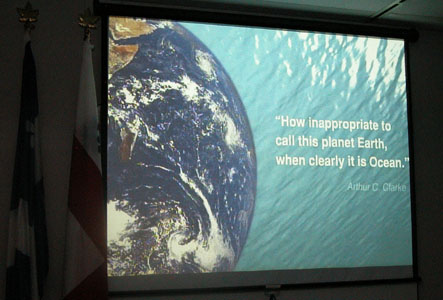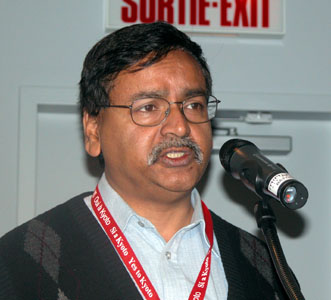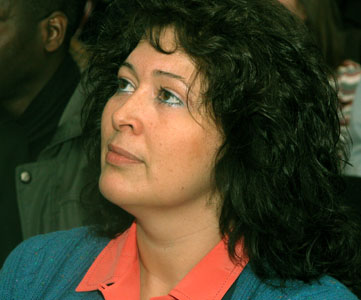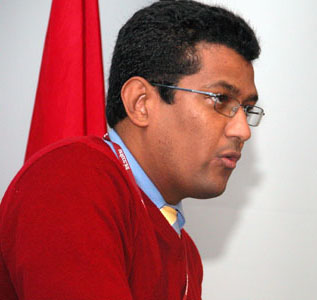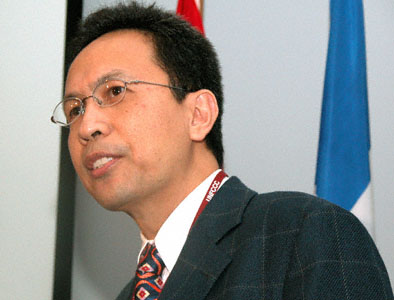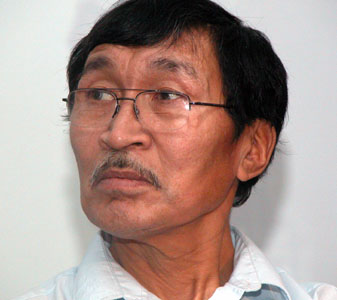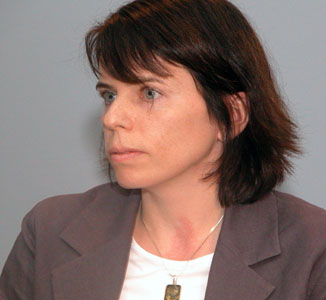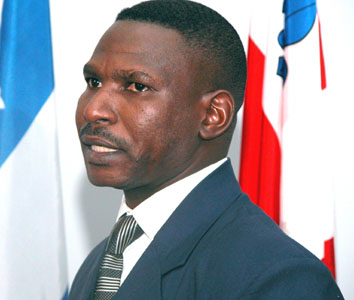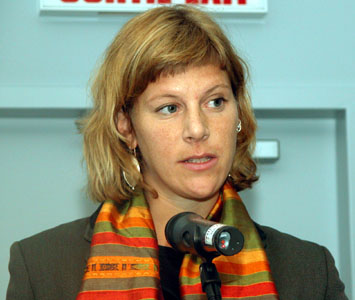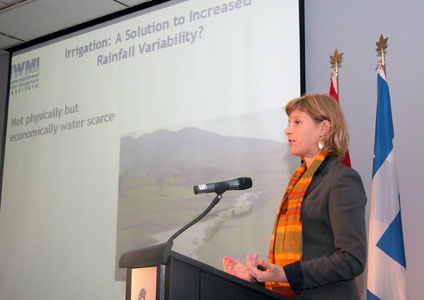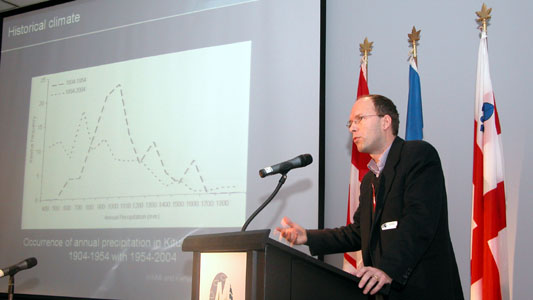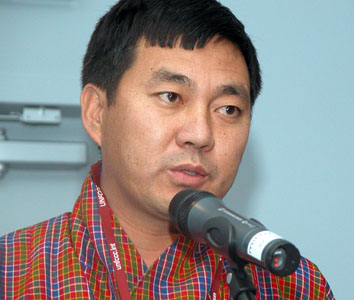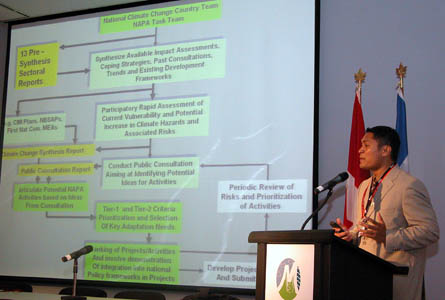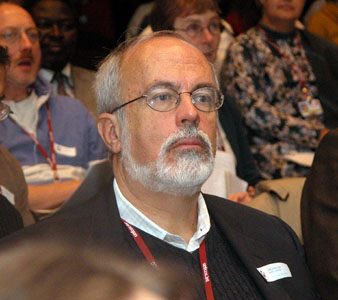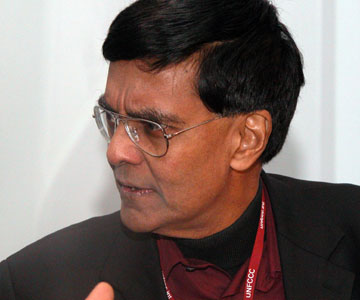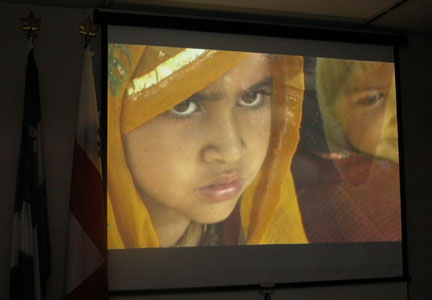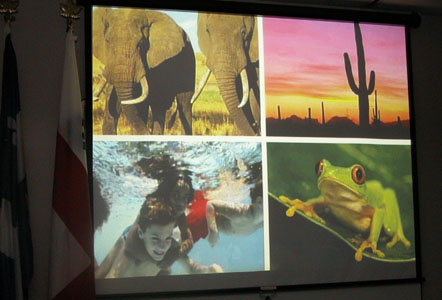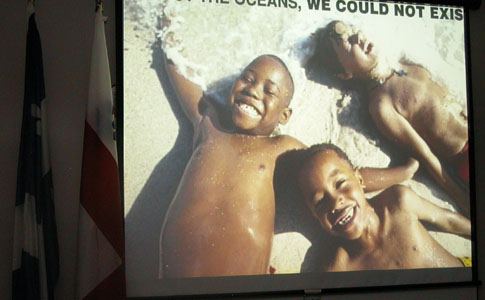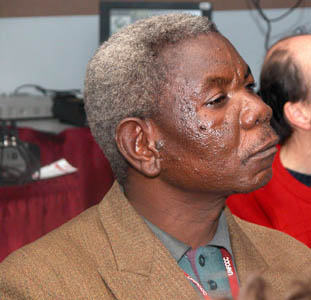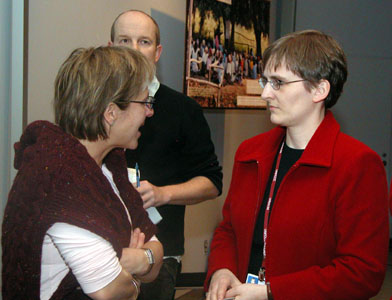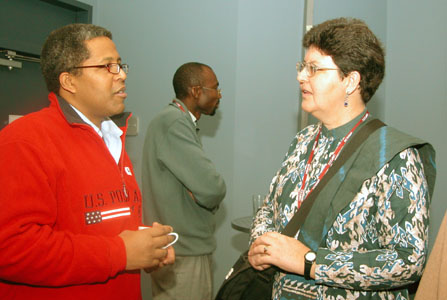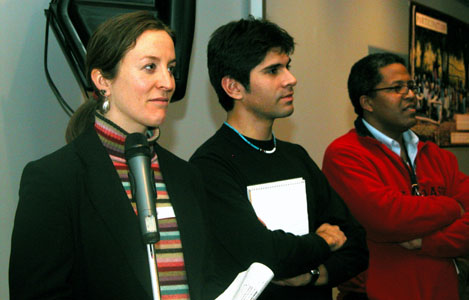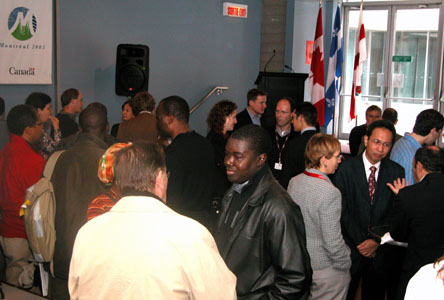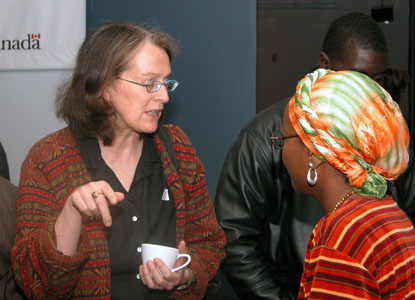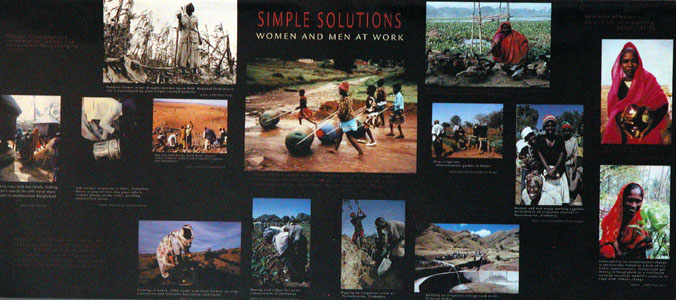|
Development
and Adaptation Days
3-4 December 2005 | Montreal, Canada |
 |
||
| |||||||||||||||||||||||||
Highlights
for Sunday 4 December 2005
|
ADAPTATION DAY: |
|
On 4 December, Saleemul Huq (left) opened the Adaptation Day, which included sessions on adaptation science, community-based adaptation, experience with NAPAs, and a high-level panel discussion, noting that adaptation is part of the agenda of the UNFCCC COP and its subsidiary bodies, and expressing hope that discussions assist field work and may contribute to inform negotiations. |
|
|
SESSION 1: ADAPTATION AND SCIENCE |
|
|
|
|
|
|
|
|
|
|
| Above photo L-R: Tony Nyong, University of Jos and Neil Leary, SysTem for Analysis, Research and Training (START) | |
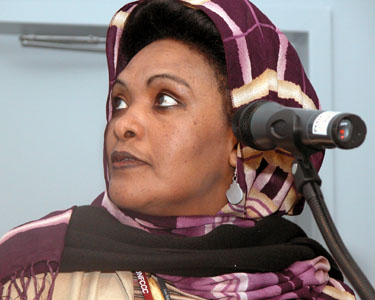 |
||
|
|
Evans Kituyi, University of Nairobi, emphasized the need for guidelines for informing the formatting of adaptation
programmes and identifying appropriate partners within innovative networks.
Monica Wehbe, "Universidad Nacional de Rio Cuarto," Argentina, illustrated the unequal impacts of macro-economic reforms and agricultural policies on the vulnerability of small-scale farmers' in Argentina, including the reduction of economic margins for coping with adverse climate events and the cultivation of marginal lands that have high exposure to climate variability.
Balgis Osman Elasha, Sudan Higher Council for Environment and Natural Resources, presented an analysis on local and national policies for successful climate-related responses in drought-prone areas of Sudan aimed at linking local coping mechanisms to development strategies.
Emilio Sempris, Water Center for the Humid Tropics of Latin America and the Caribbean, discussed the mainstreaming of Earth Observing System products in decision-making in Mesoamerica, through implementing the Regional Visualization and Monitoring System (SERVIR), which utilizes NASA technologies and data to process information on water and energy balance, climate change, weather, natural disasters, and biodiversity, among others things.
Presenting a study of adaptation strategies in the Philippines, Rodel Lasco, International Centre for Research in Agroforestry (ICRAF), Philippines, explained that cross-sectoral analyses of adaptation strategies enable managers to identify cross-sectoral synergies ahead of time, while noting that costs are a major limiting factor for adaptation synergies.
| Lisa Schipper, International Water Management Institute, presented a study on the impacts of water irrigation on poverty and the environment in Ethiopia, which considers issues such as whether irrigation may allow better adaptation to climate change or enhance food security. | Jeroen Aerts, Free University, the Netherlands, presented on a community-based sand dams project in Kenya, which builds on a locally-developed water storing technology that prevents evaporation and allows a predictable water supply for small rural communities. | ||
|
Bubu Pateh Jallow (right), Department of State for Fisheries and Water, the Gambia, and Tom Downing (left), Stockholm Environment Institute, co-chaired the session, with Co-Chair Jallow noting that NAPAs, are allowing LDCs to communicate their more immediate needs. |
|
|
Co-Chair Jallow presented a framework for costing adaptation activities that applies economic models to evaluate different projects. Using this methodology, he presented conclusions on the timing and convenience of using irrigation and fertilization to promote agriculture in the Gambia. |
William Dougherty, Stockholm Environment Institute, presented "NAPAssess," a tool supporting decision-making in NAPA processes by providing a step-by-step reference for stakeholder engagement, project prioritization, and project portfolio development, making NAPA processes as transparent and participatory as possible. |
Mozaharul Alam, Bangladesh Centre for Advanced Studies, shared lessons learnt in stakeholder consultations for Bangladesh's NAPA. |
|
David
Runnalls, IISD, chaired the high-level panel discussion. |
Boni Biagini, GEF, noted that all development sectors are impacted by climate change and that approaches to adaptation assessment should be harmonized. |
Mohan Munasinghe, Vice-Chair of the International Panel on Climate Change, called for attracting the attention of decision-makers, particularly ministers of finance and planning, to adaptation, and for moving from adaptation theory to action.
Noting participants' agreement that adaptation is about development, Youba Sokona, Sahara and Sahel Observatory, expressed concern that short-term adaptation tools and action plans will not enhance resilience or contribute to development. He recommended a focus on activities that increase resilience rather than on funding adaptation per se.
Andy Atkins, Tearfund, noted that the Development and Adaptations Days event identified a daunting scale of problems and the existence of relevant good practice, and urged participants to: start a "global movement" for an alternative future; adapt their behaviour in all their spheres of influence; and inject a real sense of urgency into COP-11 negotiations.
Mohammad Reazuddin, Bangladesh Ministry of Environment and Forestry and Chair of LDC Experts' Group, emphasized that climate change is a development problem and LDCs are the most affected, noting that water, agriculture, forests and biodiversity are critical areas highlighted by NAPAs, and urging new political commitments to climate change mitigation and to a mandatory fund for adaptation.
| Above photos: Movies on development and adaptation presented at the meeting. | ||
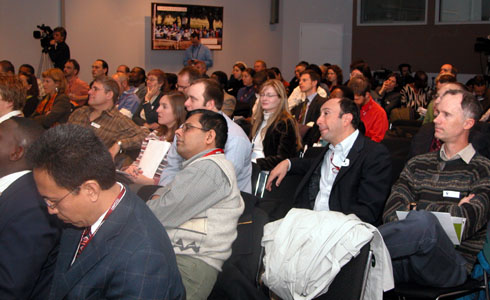 |
| Related Links |
|
|


